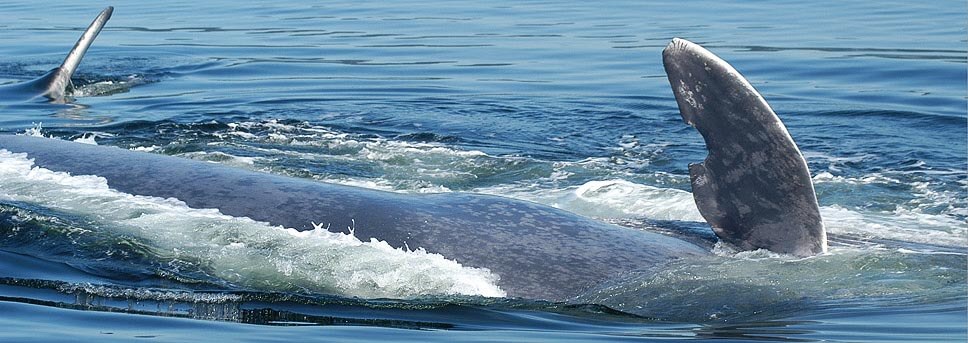Every day, blue whales must devour up to 4 tonnes of krill before they are full. With such an enormous appetite, it’s no wonder that food is a determining factor in their migration. But how do they choose a summer feeding area that will provide an abundance of prey? According to a study published in Proceedings of the National Academy of Sciences, blue whales trust their memory! They are believed to return to the same places and at the same times of the year because they know from experience that they will find krill in those waters.
Relationships between migration and diet have been studied, but mainly in terrestrial herbivores. These animals can use two complementary ways to find food. Firstly, they are able to interpret environmental signals that indicate peaks in plant productivity, which enables them to adapt in real time. That said, they can also rely on their past experience to determine which places typically provide a large amount of food. The objective of the study was to determine which of these two strategies is used by blue whales in the Pacific.
Migratory mechanisms in marine ecosystems are less well known because they are more complex to study, especially since studies need to be conducted on an extremely large scale and because telemetry, which allows whales to be tracked over long distances using tags placed on their backs, involves multiple challenges. In addition, the ocean is a highly dynamic environment, so knowing where and when food resources are found is not so straightforward.
The memory of an elephant…
Researchers have observed that Pacific blue whales return to the same places every year and on similar dates. Curiously, their feeding grounds are not necessarily the most productive areas. Rather, they are the most predictable ones. By favouring stability over quantity, blue whales avoid unpleasant surprises in a highly variable ecosystem. Blue whales are able to benefit from this strategy because they have a life expectancy of 80 years, which allows for long-term learning.
… but poor adaptability
This new knowledge on blue whale migration will provide a better understanding as to how climate change is likely to affect this endangered species. Marine mammals are particularly vulnerable to rapid change because they are infrequent breeders. Natural selection, which allows animals to adapt to new environmental conditions, takes place at the same rate as reproduction. Animals that produce multiple offspring every year, such as rodents, can adapt much more quickly than those that reproduce more slowly. Additionally, if blue whale mortality were to spike due to a lack of food, the birth rate would not be able to immediately compensate.
If krill were to suddenly move north due to rising water temperatures, the consistency of the blue whale’s migration pattern could be detrimental. A number of bad years may be needed to affect the overall good productivity that is burned into the blue whales’ memory. Furthermore, unlike humpbacks, which feed on krill and small fish, blue whales are specialists: they eat exclusively krill. Adaptability is therefore not the blue whale’s strong suit.
There remains much to learn about the migration of blue whales. For example, we do not know which migratory mechanisms are employed by the youngest whales, which have migrated only a few times. Do they follow their elders or do they go their own way?
Sources
- (2019) Abrahms, B., E. L. Hazen, E. O. Aikens, M. S. Savoca, J. A. Goldbogen, S. J. Bogard, M. G. Jacox, L. M. Irvine, D. M. Palacios et B. R. Mate. Memory and resources tracking drive blue whale migrations. (États-Unis). Proceedings of the National Academy of Sciences.





